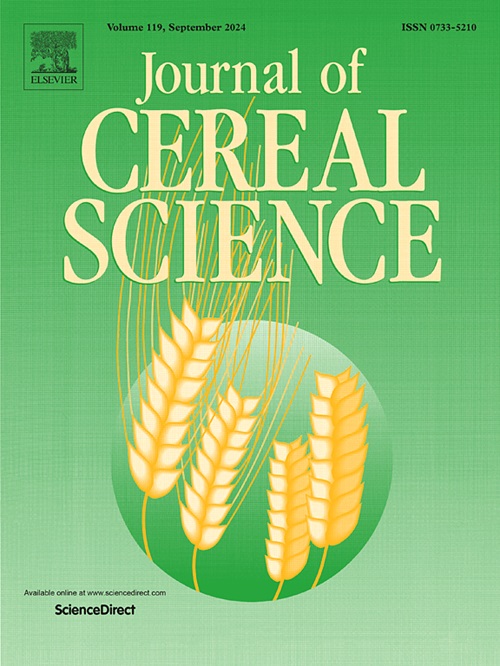Evaluation method of the physical and physicochemical quality of white and parboiled rice processing in the industry using NIR and multivariate analysis
IF 3.7
2区 农林科学
Q2 FOOD SCIENCE & TECHNOLOGY
引用次数: 0
Abstract
This study explored the potential of near-infrared spectroscopy and multivariate analysis to enhance the understanding of the physicochemical composition of rice, aiming to develop more accurate and efficient chemometric methods for evaluating grain quality. The experiment was conducted in two stages: (i) individual characterization of defects and healthy grains and (ii) analysis of classified samples (Types 1 to 5 and Off-type) through visual analysis of defects, determination of centesimal composition, Pearson correlation analysis and principal component analysis. The results revealed that, for white rice, Type 1 exhibited higher starch content and lower moisture content, which contributed to a more favorable texture after cooking. In parboiled rice, Type 1 stood out for its balanced nutritional composition, with high starch content and uniform nutrient retention, an effect attributed to the parboiling process. Near-infrared spectroscopy, coupled with multivariate analysis, proved to be a rapid and effective method for assessing rice quality, offering insights into correlations between physicochemical parameters that traditional methods cannot capture.

用近红外光谱和多变量分析评价工业加工白米和半精米的理化品质
本研究探讨了近红外光谱和多变量分析在提高对水稻理化成分认识方面的潜力,旨在开发更准确、高效的稻米品质化学计量方法。实验分两个阶段进行:(i)缺陷和健康颗粒的个体表征;(ii)通过缺陷视觉分析、百分位成分测定、Pearson相关分析和主成分分析对分类样品(1至5型和off型)进行分析。结果表明,1型大米淀粉含量较高,水分含量较低,蒸煮后口感较好。在煮熟的米饭中,1型米饭以其均衡的营养成分而突出,淀粉含量高,营养保留均匀,这归因于煮熟的过程。近红外光谱与多变量分析相结合,被证明是一种快速有效的大米质量评估方法,它提供了对传统方法无法捕获的理化参数之间相关性的见解。
本文章由计算机程序翻译,如有差异,请以英文原文为准。
求助全文
约1分钟内获得全文
求助全文
来源期刊

Journal of Cereal Science
工程技术-食品科技
CiteScore
7.80
自引率
2.60%
发文量
163
审稿时长
38 days
期刊介绍:
The Journal of Cereal Science was established in 1983 to provide an International forum for the publication of original research papers of high standing covering all aspects of cereal science related to the functional and nutritional quality of cereal grains (true cereals - members of the Poaceae family and starchy pseudocereals - members of the Amaranthaceae, Chenopodiaceae and Polygonaceae families) and their products, in relation to the cereals used. The journal also publishes concise and critical review articles appraising the status and future directions of specific areas of cereal science and short communications that present news of important advances in research. The journal aims at topicality and at providing comprehensive coverage of progress in the field.
 求助内容:
求助内容: 应助结果提醒方式:
应助结果提醒方式:


